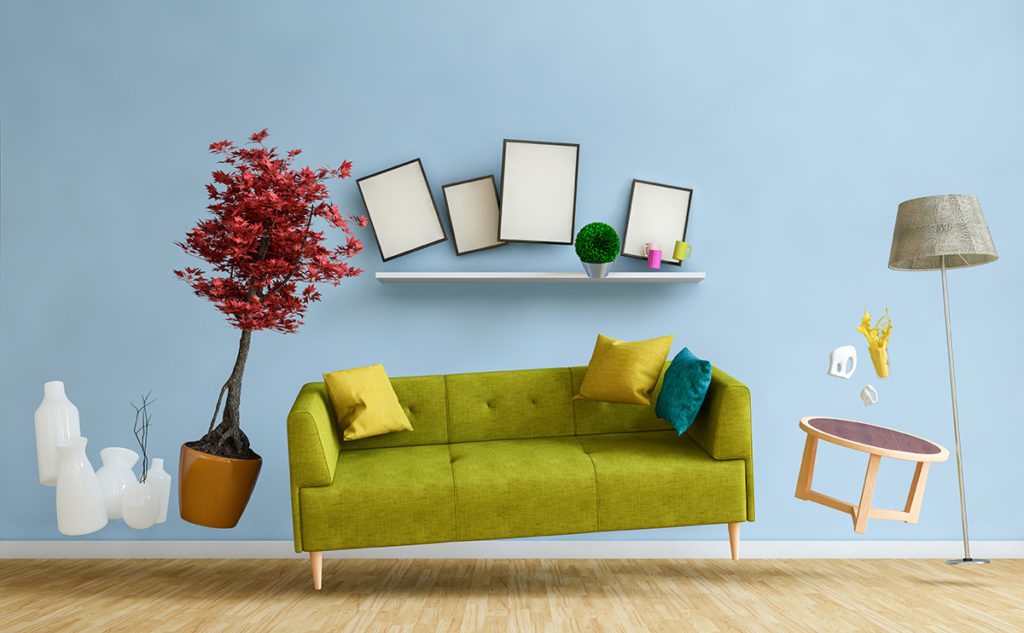NMHC Report: How Tech and Demographics Will Disrupt Multifamily

As technological innovations continue to disrupt traditional approaches to living, multifamily will be redefined by a more personalized and enriched consumer experience. Although we are already seeing the application of advancements like smart home features, the industry must also look to anticipate how technology, and life itself, will continue to progress in years to come. With an impending spike in apartment demand already constituting the need to develop 4.6 million units by 2030, it’s imperative that the new inventory be constructed to meet the expectations of future renters living in a vastly different world than the one we live in today.
That’s the takeaway from a new NMHC report titled “Disruption: How Demographics, Psychographics and Technology are Bringing Multifamily to the Brink of a Design Revolution”. Let’s now examine the major game changers highlighted in the research findings.
Tech Transformations
Incorporating tech into multifamily is no longer just an add-on feature to be used as a selling point. Instead, technology has emerged as a reliable means of tracking, analyzing and improving the overall performance of multifamily. Basic adaptions allow for residents to be in control of lighting, appliances, and security, while more complex systems like beacon tech can automatically order coffee as you are running out the door. However, it’s not just residents who are reaping the benefits.
Building owners are also looking to technology to help them identify and respond to property issues with greater efficiency. There is also a rise in automation as we move further into an age where machines can perform functions that, until recently, only humans could perform. Sensors and robots are gathering and interpreting data, while devices like Siri are helping us complete tasks that once required human processing power.
Beyond enhancing living arrangements, technology has transformed retail and reshaped how customers go about browsing and purchasing. With e-commerce frontrunners like Amazon revolutionizing the industry (have you seen Amazon Go in action?), traditional brick and mortar stores are now in danger of being overlooked. However, not all retail is at risk. In fact, sales at restaurants and bars are growing twice as fast as other sectors. This may provide further insight into what people are currently interested in, which appears to be experiential based.
Personalization
Move over location, the big “L” word in today’s real estate world seems to be lifestyle. Between an aging cohort of baby boomers, expanding population of immigrants and millennials who show little to no interest in homeownership, it comes as no surprise that rental offerings have stretched beyond catering to a single person looking to rent a typical one-bedroom apartment. Moving forward, multifamily design will encompass living arrangements that better suite a more diverse set of renters. This could entail providing a greater selection of leasing options, furnishings, or price points.
Additionally, with mobile technology enabling people to work outside their offices, multifamily owners should be thinking about creating personalized work spaces for residents. According to the report, this could be accomplished by turning underutilized rooms into coworking lounges equipped with computer and coffee bars. As technology continues to encourage the trend of working remotely, a defined workspace could be a determining factor for a renter choosing one apartment over another.
Another change that is being brought to light is a shift in transportation means, which can be partially attributed to an increase in ride share companies and transit-oriented developments. As this continues to unfold, we will see far fewer parking mandates and lessened car dependency. While lessened car dependency benefits the environment and certainly traffic conditions, it is also beneficial to owners and residents. Fewer cars in need of parking spots presents a unique opportunity to repurpose unused spaces and consequently lower rents, better catering to the evolving needs of renters.
Wellness
As our population becomes more cognizant of their health, they will continue to look for living arrangements that support their well-being. Apartment spaces that nurture the physical, social and emotional well-being of renters will continue to distinguish themselves from the competition. Since the definition of wellness has broadened to include the mind, body, and spirit, having a room full of treadmills is no longer extraordinary. Rather, renters are looking for advancements such as performance tracking machines or designated areas that promote relaxation.
While our historically high levels of connectivity keep us attached to our social network(s) of choice, they are also taking a toll on our emotional health. According to the American Psychological Association, nearly nine out of 10 people attribute higher levels of stress to social media and a constant stream of texts, calls, and emails. This proves that even the most social butterfly needs a break from screen time, which is why the social detox movement is gaining momentum. With no sign of technology slowing down, multifamily needs to respond by preserving or producing spaces that give residents a chance to unwind. One instance of this could be implementing soundproof walls to encourage more restful sleep.
Moreover, a growing number of residents are interested in enhancing their social lives through interactions with fellow residents or community members. They seek the opportunity to participate in social experiences within or around their living space in hopes of feeling more connected. With options ranging from Farmer’s Markets to movie nights, multifamily will undoubtedly be working to meet the needs of renters by establishing a stronger sense of community.
In conclusion, while technology continues to propel us into the future, it is also pushing us to get back to basics by grounding ourselves in experiences and human interaction. Multifamily in the future will not only integrate tech developments into its core design, but it will also attempt to preserve what can’t be produced by sensors or AI, like a sense of community and feeling of belonging.

